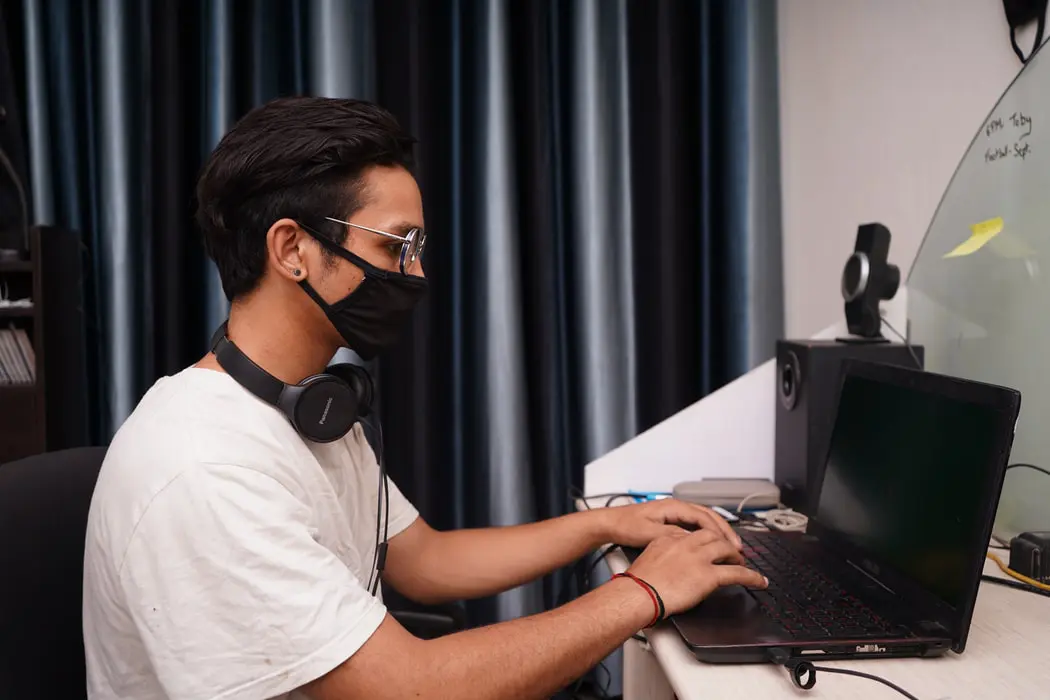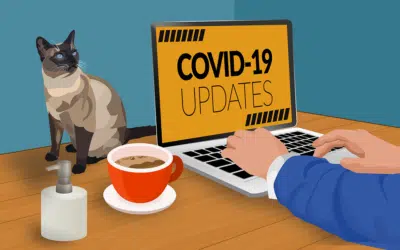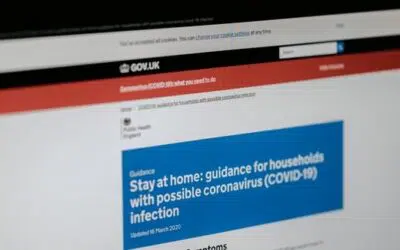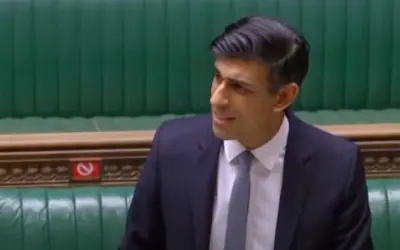We’ve created this Covid-19 Management Guidelines For Workplaces to provide all line managers and people leaders with information and advice. It’s also been prepared in accordance with the latest UK and Scottish Government guidance.
Q: What’s the difference between self-isolation, social distancing and shielding?
Self-isolation is when someone does not leave their home because they have or might have Covid-19. This helps stop the virus spreading to other people.
Self-isolation is different to:
- Social distancing – this is the advice for everyone to avoid close contact with other people. Social distancing is to stop the spread of Covid-19. You should ensure all steps have been taken to ensure social distancing measures are in place and all employees who report to you are following these measures.
- Shielding – this is the advice for people at high risk from Covid-19. If an employee is high risk (clinically extremely vulnerable) from Covid-19, they were advised to take extra steps to protect themselves until 1st August 2020. This was called shielding. However, as of 1st August, staff are no longer eligible for SSP based on being advised to shield by the Government. If staff are unable to work from home, you should help transition them back to work safely. In addition, support them with maintaining good hand hygiene and social distancing practice in the workplace.
Please note it’s worth considering if there are any local restrictions in place where there is a Covid-19 outbreak. The advice may be different for staff who live, work or study in these areas. See areas with local restrictions on GOV.UK. Link to Gov.uk – Local restrictions
Q: When should employees self-isolate?
Employees must self-isolate immediately if:
- They have any symptoms of Covid-19 (a high temperature, new continuous cough, or loss or change in smell or taste)
- They have tested positive for Covid-19 – this means they have Covid-19
- Staff live with someone who has symptoms or tested positive
- Someone in their support bubble has symptoms or tested positive
- They are told to self-isolate by NHS Test and Trace’ in England, ‘Test and Protect’ in Scotland or ‘Test, trace, protect’ in Wales.
- They arrive in the UK from a country with a high Covid-19 risk – see GOV.UK: how to self-isolate when you travel to the UK
Q: What happens if an employee needs to self-isolate?
In accordance with Government advice, if an employee has symptoms, however mild, or is in a household where someone has symptoms, they should self-isolate. Everyone in their house must also self-isolate. You should advise them to follow the Government advice and ask for a test. If a test is negative, isolation is no longer required.
If staff are self-isolating, they must not leave their home and should follow the guidance below:
- They should not go to work, school or public places – home working should be allowed where this is possible
- They should not use public transport or use taxis
- People should not go out to get food and medicine, making use of online services
- They should not have guests in their home, including friends and family – except for people providing essential care
- They should not go out to exercise
If an employee has been in contact with someone who has Covid-19, but they don’t have symptoms and they have not been told to self-isolate, they should continue to follow social distancing advice.
Q: What is a support bubble?
A support bubble is where someone who lives alone (or just with their children) can meet people from 1 other household.
Q: One of my employees has arrived at work and I think they might be displaying symptoms of Covid-19, what do I do?
According to NHS guidance the symptoms of Covid-19 are:
- A high temperature (above 37.8 degrees Celsius)
- A new, continuous cough
- Loss or change to your sense of smell or taste
If an employee attends work or calls to report they have any of the symptoms listed above, however mild, or is in a household where someone has symptoms, they should self-isolate, as should all in their household.
If the employee develops symptoms whilst at work, you should:
- Advise them to leave work
- Encourage them to avoid public transport to get home
- Advise them to get a test as soon as possible. The test should be done in the first 5 days of having symptoms
- Where it is possible, home working should be permitted
- If home working is not possible, discuss with them what they will get paid ie. Company sick pay or SSP
Under the test and trace system, they will be asked to disclose the places they have visited in the 48 hours prior to their symptoms starting. This may include their workplace.
Q: One of my employees has been confirmed as having the virus, should we close the workplace?
Where a worker has tested positive for Covid-19 the position is as follows:
- An employee with a confirmed diagnosis should stay at home with immediate effect. You should also advise them to follow the Government self-isolation advice.
- Employees who could have been exposed to the infected colleague, due to being in close contact with them, should be sent home.
Government advice states those who have been in recent close contact with an infected person should self-isolate, breaking the transmission chain.
Q: What does ‘close contact’ mean?
Employers have a duty of care for all employees and visitors on work premises. It is therefore vital that Health and Safety procedures are in place to ensure that all social distancing measures are being taken in accordance with Government guidelines.
Examples of close contact include:
- Close face to face contact (under 1 metre) for any length of time – including talking to others or coughing on them
- Being within 1 to 2 metres of each other for more than 15 minutes – including travelling in a small vehicle
- Spending lots of time in your home
Interaction, which has taken place through a Perspex (or equivalent) screen, will not count as sufficient contact. Please refer to the Company Policy regarding Covid-19 social distancing measures to ensure social distancing is being adhered to.
Q: I have noticed that employees are not adhering to the social distancing, what should I do?
The Company should ensure all employees have access to:
- A clear policy and procedure in relation to social distancing measures
- Given the appropriate training and guidance on how to apply the policy and procedure
- Access to all the necessary equipment and PPE
You are encouraged to tackle non-conformance immediately and ensure that corrective action is taken. Contact HR if you have concerns with repeated non-conformance. HR will provide the support should formal action be necessary in line with the Company Investigation/Disciplinary Policy.
Q: What happens if an employee needs to self-isolate?
In accordance with UK and Scottish Government advice, if an employee has symptoms, however mild, or is in a household where someone has symptoms, they should self-isolate, as should everyone in their household. These people should not leave their house or go to work. Employers should advise them to follow the Government self-isolation advice and ask for a test. If a test is negative, then isolation is no longer required.
If an employee is self-isolating and cannot work form home, pay should be calculated in line with the Company Policy regarding sickness absence.
Q: What should I do if an employee is self-isolating, but it has come to my attention they are not adhering to the guidance?
If you have reason to believe that an employee may not be adhering to Government guidance in relation to self-isolation, you are encouraged to engage in open and honest discussion with them to discuss your concerns. You should contact HR to discuss the next steps, who will provide advice and support should formal action be necessary under the Company Investigation/Disciplinary Policy.
Q: What happens if an employee contracts Coronavirus? Do they still get full pay or sick pay?
If an employee contracts Coronavirus, this should be treated in the same way as any other sickness absence in terms of payment. If Company policy normally only pays statutory sick pay (SSP) during sickness absence, then this is what the employee should receive subject to meeting the qualifying criteria. Employees who are self-isolating in accordance with UK and Scottish Government advice, or are advised by then test and tracing service, are also eligible for SSP.
Q: Can the organisations enforce registration to any track and trace system?
No, taking part in the scheme is voluntary for individuals. The government is asking employers to encourage employees to adopt the scheme, follow the guidelines, and inform their employer of any request to self-isolate.
Q: An employee is refusing to self-isolate, what should I do?
Where an employee refuses to self-isolate and wishes to return to the workplace, you should first consult with the employee to try and establish the reasons for this. This is with an aim to resolving any concerns the employee has.
Under the Health and Safety at Work Act 1974 (HSWA), an employer is under a duty to provide a safe place of work and protect the health and safety of its employees. If an employer is aware that one of its employees has been instructed to self-isolate via the NHS Test and Trace scheme, but allows or encourages the employee to come into the workplace, the employer could be putting the health and safety of other employees at risk. Therefore, it is likely that the employer would be at risk of being in breach of its duties under the HSWA. Furthermore, the employee should understand that they may not be permitted to return to company premises during any period of self-isolation.
We therefore advise employers and employees to work together to try resolve any issues in regards to self-isolation. The most likely reason why an employee will be reluctant to self-isolate is because they will lose out on pay if they are put onto statutory sick pay (SSP). Consider, therefore, whether there is any work that the employee might be able to do from home. This is even if it’s outside of their usual remit. Alternatively, consider whether the employee is able to work additional hours on their return.
Employees who are asked to self-isolate under the Test and Trace scheme. In addition, they are unable to work from home, are entitled to receive SSP. Alternatively, employers may consider offering the employee the option to take paid annual leave if they prefer.
Q: What is the COVID-19 Job Support Scheme
The Chancellor has announced a new Job Support Scheme to replace the Coronavirus Job Retention Scheme when it comes to an end at the end of October. Under the new Scheme, the government will contribute towards the wages of employees who are working fewer than normal hours due to decreased demand.
Key points of the scheme:
- The scheme will come into effect for six months from 1 November 2020. It will be open to businesses across the UK even if they have not previously used the furlough scheme.
- All SMEs are eligible to participate. For larger businesses, they will have to meet a financial assessment test. In addition, to demonstrate that the turnover of their business has been adversely affected by COVID-19. The government expects that large employers will not be making capital distributions such as dividends or share buy backs, while using the scheme.
- In order to be eligible, employees will need be on the employer’s PAYE payroll on or before 23 September 2020.
- Employees will need to work at least one third of their normal hours. This will be paid for by their employer at the employee’s normal rate of pay. The government will review the threshold of a third of normal working hours after three months.
- In relation to the hours not worked, the employer will pay the employee for a third of these hours. The government will then pay the employee for a further third of these hours. In relation to any unworked hours, an employee will receive a total of two thirds of their pay. The employer will be reimbursed in arrears for the government contribution.
Employers must also
- Employers must agree the short-time working arrangements with the employee and any changes to the contract of employment need to be made by agreement and notified to the employee in writing.
- The level of grant from the government will be calculated based on the employee’s usual salary rate (and not furlough rate) but will be capped at £697.92 per month. The grant will not cover pension contributions and NICs, which will be payable by the employer.
- The scheme will be flexible so employees can come on and off the scheme and can work to a different pattern of hours, subject to a minimum short-time working arrangement period of 7 days.
- To be eligible, employees must not be made redundant or be given notice of redundancy during the period in which the employer is claiming the grant.
- Eligible businesses can use the scheme and can also claim the Job Retention Bonus for workers who have been furloughed and are kept on until the start of February 2021.
It is important to note that HMRC will be checking claims.
Links to help and support
- Scottish Government – Covid19 employer guidance
- Gov UK – Coronavirus
- Link to NHS – What to do if Covid-19 symptoms get worse
- Link to NHS – What to do if you get Covid-19 symptoms again
- NHS – Get a test
- Link to NHS – Bereavement Support
- Link to Gov UK – Local restrictions
- Gov UK – Returning to UK from abroad
- Link to Protect Scotland
- Link to Gov UK – NHS Test and Trace
If you have any questions on our Covid-19 Management Guidelines For Workplaces, contact us now.







